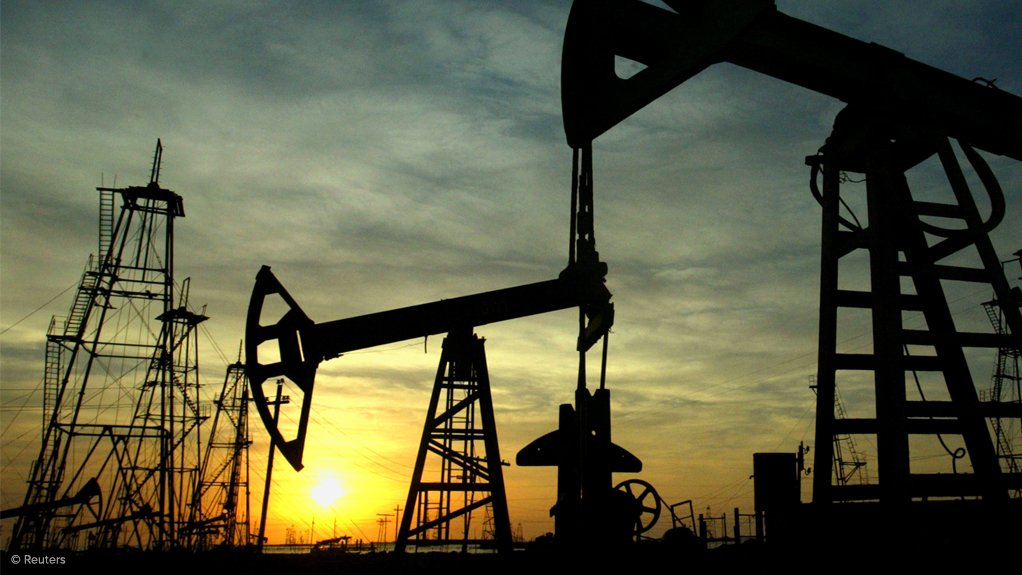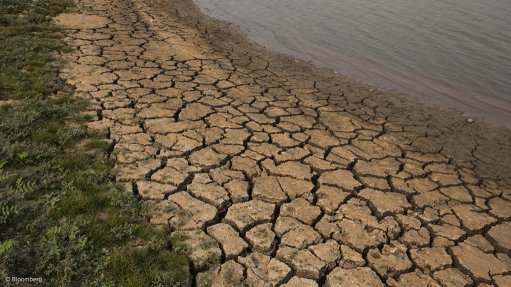Trump takes aim at western monuments that may hold oil, coal
WASHINGTON DC – Bears Ears National Monument, in Utah, boasts stretches of red-and-yellow sandstone so brilliant they appear to be ablaze and rock structures so precarious they appear to defy gravity.
The rugged terrain south of the Colorado River also has reserves of oil and natural gas that are currently off limits to new leasing -- restrictions that may end as the Trump administration reviews 27 large-scale monuments his predecessors set aside for protection.
Industry groups and Republican lawmakers have praised President Donald Trump’s order to review those monument designations, calling it a welcome reconsideration of federal overreach. Yet, environmental groups are concerned Trump will scrap or scale back those designations, and the net result will be a boost to the fortunes of oil drillers and mining companies.
"Oil and gas is definitely a factor -- particularly given that with Trump it’s been something he’s talked about consistently," said Tim Donaghy, a research specialist with Greenpeace. "They’re going to try to knock down as many barriers as possible to expanded oil and gas drilling."
Under the 1906 Antiquities Act, presidents can set aside land to protect historic landmarks, structures or other objects of historic or scientific interest. Most recent monument proclamations have barred new mining claims and oil, gas and mineral leases, but typically protect existing rights, according to an assessment by the Congressional Research Service. Unlike national parks, which must be established by Congress, each monument has its own rules for how the land can be used.
Presidents of both parties have used the law to designate increasingly large parcels of land, raising the hackles of Republican lawmakers worried the protections will constrain energy development and animal grazing on the sites. Former President Barack Obama issued protections for a record amount of Western land -- much of it also rich in oil or minerals.
Republicans objected to what they have termed a “land grab,” and Trump made reconsidering those designations an initial priority. Interior Secretary Ryan Zinke is travelling through Utah this week to see the sites, complete with a hike to Bears Ears’ 'House on Fire' ruins.
"I’m an optimist,” Zinke said in a statement Wednesday. “Everyone wants to preserve the important areas, the question is what vehicle of land management” to use. While touring Bears Ears earlier, Zinke noted: "It is a controversial monument."
More than 90% -- or 1.34 million acres -- of the Bears Ears national monument overlaps with potential reserves of oil, gas and coal, according to an analysis of US government data by Greenpeace that was reviewed and checked by Bloomberg. The area also contains significant uranium resources, according to the Centre for American Progress.
Those fossil fuels could lurk under some 2.7-million acres of five monuments, including Bears Ears, that are now under review, spanning an area bigger than Yellowstone National Park, according to Greenpeace’s analysis.
The energy resources were illustrated by US Energy Information Administration maps of dense oil and gas formations known to contain the fossil fuels and sedimentary basins. The analysis also drew on US Geological Survey data that shows recoverable coal.
Representative Rob Bishop, a Republican from Utah who heads the House Natural Resources Committee, has focused his ire on Bears Ears, the remote, stretch of desert designated by Obama just a month before he left office. Although environmentalists and some indigenous groups backed giving Bears Ears monument status, Bishop said out-of-state support drowned out local voices of opposition.
"They’re trying to make this monument to protect it from being raped by oil and gas development, which is so ludicrous,” Bishop said in an April interview.
Bishop has argued in favour of a similar, slightly smaller package of land protections, worked out with local officials. The set aside, which would need congressional approval, would allow recreation and grazing on some territory and tribal protections in another. Oil and mineral leasing would be banned in the protected zone but encouraged in other areas in the state.
At Grand Staircase-Escalante, in Utah, the potential riches include coal, according to the US Geological Survey. More than 40% of its total area, made a monument in 1996, holds oil, gas or coal, according to the government data. The entirety of the Canyons of the Ancients monument just across the Utah border in Colorado is believed to contain fossil fuel deposits.
To be sure, the government’s geological data is not definitive -- the sedimentary basins don’t necessarily contain abundant oil, gas or coal. But there is plenty of evidence of industry interest in some of the national monuments now under scrutiny.
For instance, EOG Resources last year won state approval to drill on state trust lands near Bears Ears. More than four dozen dormant wells were drilled in California’s flower-dappled Carrizo Plain National Monument before it was protected. And a subsequently rescinded resource management plan governing Montana’s Upper Missouri River Breaks National Monument included plans for new oil and gas wells in the site.
"There certainly is industry appetite for development there, or else companies wouldn’t have leases in the area," Kathleen Sgamma, head of the Western Energy Alliance, told E&E News regarding Bears Ears.
The presence of oil, gas and coal changes the political landscape amid the fight over this geological one.
"It’s not just the fact that the resources are there, but that industry has been on the record stating that there’s interest in development," said Kate Kelly, public lands director at the Centre for American Progress. "We have to wonder who they are going to be listening to when they make these determinations."
Comments
Press Office
Announcements
What's On
Subscribe to improve your user experience...
Option 1 (equivalent of R125 a month):
Receive a weekly copy of Creamer Media's Engineering News & Mining Weekly magazine
(print copy for those in South Africa and e-magazine for those outside of South Africa)
Receive daily email newsletters
Access to full search results
Access archive of magazine back copies
Access to Projects in Progress
Access to ONE Research Report of your choice in PDF format
Option 2 (equivalent of R375 a month):
All benefits from Option 1
PLUS
Access to Creamer Media's Research Channel Africa for ALL Research Reports, in PDF format, on various industrial and mining sectors
including Electricity; Water; Energy Transition; Hydrogen; Roads, Rail and Ports; Coal; Gold; Platinum; Battery Metals; etc.
Already a subscriber?
Forgotten your password?
Receive weekly copy of Creamer Media's Engineering News & Mining Weekly magazine (print copy for those in South Africa and e-magazine for those outside of South Africa)
➕
Recieve daily email newsletters
➕
Access to full search results
➕
Access archive of magazine back copies
➕
Access to Projects in Progress
➕
Access to ONE Research Report of your choice in PDF format
RESEARCH CHANNEL AFRICA
R4500 (equivalent of R375 a month)
SUBSCRIBEAll benefits from Option 1
➕
Access to Creamer Media's Research Channel Africa for ALL Research Reports on various industrial and mining sectors, in PDF format, including on:
Electricity
➕
Water
➕
Energy Transition
➕
Hydrogen
➕
Roads, Rail and Ports
➕
Coal
➕
Gold
➕
Platinum
➕
Battery Metals
➕
etc.
Receive all benefits from Option 1 or Option 2 delivered to numerous people at your company
➕
Multiple User names and Passwords for simultaneous log-ins
➕
Intranet integration access to all in your organisation





















